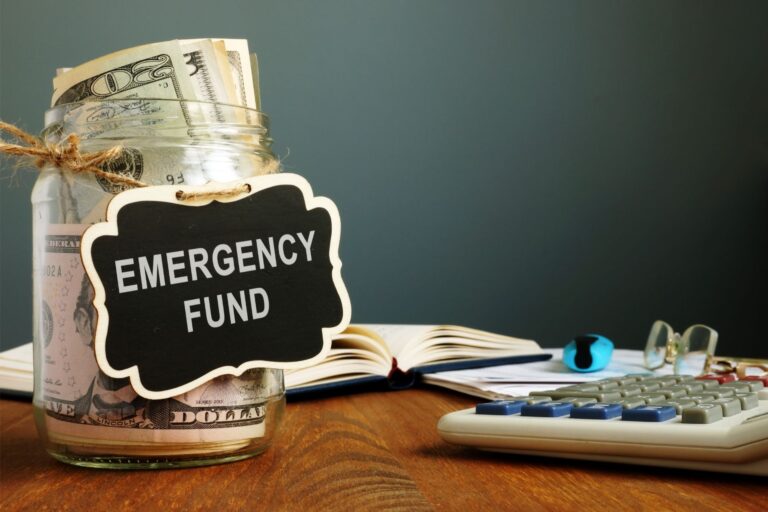How To Become Financially Independent: 10 Proven Tips That Actually Work

Let’s be real here. You’re tired of living paycheck to paycheck, right? I get it. That constant anxiety about whether your account will clear before payday hits differently when you’ve been there yourself.
Here’s the thing though: financial independence isn’t some mystical concept reserved for trust fund babies or Silicon Valley tech bros. It’s absolutely achievable for regular folks like you and me.
I’m going to walk you through 10 actionable strategies that can genuinely transform your financial situation. No fluff, no unrealistic promises. Just practical advice from someone who’s navigated this journey and actually understands the numbers behind it all.
Ready to stop stressing about money and start building real wealth? Let’s get into it.
What Does Financial Independence Actually Mean?
Before we jump into the how-to part, let’s clarify what we’re even talking about here. Financial independence isn’t about becoming a millionaire overnight (though that’d be nice, wouldn’t it?).
It means you’ve reached a point where money doesn’t control your decisions anymore. You’re not trapped in a soul-sucking job because you need the paycheck.
You’re not losing sleep over unexpected car repairs. You’ve got enough assets, investments, and savings that you can make choices based on what you actually want, not what your bank account forces you to do.
Think of it as having a financial cushion so thick that life’s punches don’t knock you down anymore. You’re debt-free, you’ve got money working for you instead of the other way around, and your future looks secure. That’s the goal we’re chasing here.
Why Should You Even Care About Financial Independence?
Look, I could give you a bunch of boring reasons about fiscal responsibility and long-term planning. But let’s talk about what really matters, the stuff that’ll actually motivate you when things get tough.
1. Chase Your Actual Dreams (Not Just Your Bills)
Ever fantasized about quitting your job to start that business you’ve been thinking about for years? Or maybe you want to travel for six months without worrying about income? Financial independence makes that possible.
Right now, you might be stuck in a job that pays the bills but kills your spirit. I’ve been there, showing up every day to something that felt more like a prison sentence than a career.
When you’re financially independent, you get to choose work that fulfills you, not just work that keeps the lights on.
Want to switch careers entirely? Go for it. Passionate about something that doesn’t pay well initially? You can afford to pursue it. That’s freedom, my friend.
2. Sleep Better At Night (Seriously)
Money problems are one of the biggest sources of stress in relationships and life in general. The constant worry about making ends meet, the arguments with your partner about spending, the panic when something breaks and you don’t know how you’ll pay for it. It’s exhausting.
Financial independence gives you something priceless: peace of mind. You stop checking your account balance with anxiety before every purchase.
You don’t have that knot in your stomach on the first of the month when rent is due. Life just gets lighter.
3. Build A Safety Net That Actually Holds
What happens if you lose your job tomorrow? For most people, that’s a nightmare scenario. Bills pile up, credit cards get maxed out, and suddenly you’re drowning in debt just trying to survive until the next opportunity comes along.
When you’re financially independent, job loss becomes an inconvenience rather than a catastrophe.
You’ve got investments generating income, savings to fall back on, and the breathing room to find the right next opportunity instead of desperately grabbing whatever comes first.
4. Retire When You Want To (Not When You Have To)
Here’s a sobering thought: working until you’re 65 or 70 means potentially missing out on the healthiest, most active years of your retirement.
Your kids’ important moments, travel opportunities, hobbies you’ve always wanted to explore, they all take a backseat to the grind.
Financial independence lets you retire early if that’s what you want. Imagine having the freedom to stop working at 50, or even 40.
That’s decades of life you get back to spend however you choose. That alone should be motivation enough, right?
5. Create Wealth That Outlasts You
This one’s about legacy. When you build real wealth through financial independence, you’re not just securing your own future. You’re setting up your kids, and potentially their kids, for success.
No more worrying about leaving your family with debt. Instead, you’re creating generational wealth that gives your descendants opportunities you might not have had. Pretty cool when you think about it that way.
How To Become Financially Independent: 10 Strategies That Work
Alright, enough with the why. Let’s talk about the how. These aren’t theoretical concepts, they’re practical steps you can start implementing today.
1. Master The Art Of Budgeting (Yes, It’s Actually Important)

I know, I know. Budgeting sounds about as exciting as watching paint dry. But here’s the truth: if you don’t tell your money where to go, you’ll always wonder where it went.
A budget isn’t about restricting yourself. It’s about being intentional with your spending. Before each month starts, assign every single dollar a job. Rent, groceries, savings, entertainment, whatever. The point is you’re in control, not your impulses.
I use the zero-based budgeting method, where your income minus your expenses equals zero. Every dollar has a purpose. At first, you’ll probably mess up your estimates. That’s fine. Adjust as you go. Track your actual spending and tweak your budget categories until they reflect reality.
There are tons of apps that make this easier. YNAB (You Need A Budget) is fantastic if you want something comprehensive. Mint works great if you prefer something free and automated. Pick one and actually use it consistently.
The difference between people who achieve financial independence and those who don’t often comes down to this one habit. Boring? Maybe. Effective? Absolutely.
2. Build An Emergency Fund (Your Financial Airbag)

Life loves throwing curveballs. Your car breaks down. Your laptop dies right before a big project. You need an emergency dental procedure. Without an emergency fund, these situations become financial disasters that derail your entire progress.
Start with $1,000 as your initial emergency fund. That’s enough to handle most minor emergencies without reaching for a credit card. Once you’ve got that, work toward saving 3-6 months of living expenses.
I know that sounds like a lot. It is. But think about it this way: if you lost your income tomorrow, how long could you maintain your current lifestyle? That’s what this fund is for. It’s not for vacations or new gadgets. It’s for genuine emergencies only.
Keep this money somewhere accessible but not too accessible. A high-yield savings account works perfectly. Marcus by Goldman Sachs and Ally Bank both offer competitive rates without monthly fees.
Having this cushion completely changes your relationship with stress. Trust me on this one.
3. Eliminate Debt Like Your Future Depends On It (Because It Does)
Debt is the single biggest obstacle between you and financial independence. Every dollar you send to credit card companies or student loan servicers is a dollar that can’t work for your future.
Let’s do some quick math. If you’re paying 18% interest on $5,000 in credit card debt, you’re throwing away $900 a year just in interest. That’s money that could be growing in investments instead of padding some corporation’s profits.
Once you’ve got your starter emergency fund, attack your debt with everything you’ve got. There are two popular methods: the debt snowball and the debt avalanche.
The debt snowball method focuses on paying off your smallest debts first, regardless of interest rate. You make minimum payments on everything except the smallest debt, which gets every extra dollar you can throw at it. When that’s gone, you move to the next smallest. The psychological wins keep you motivated.
The debt avalanche method targets your highest-interest debt first. Mathematically, this saves you more money in the long run. You make minimum payments on everything except the debt with the highest interest rate, which gets your extra payments.
Which one’s better? Honestly, the one you’ll actually stick with. I personally used the snowball method because I needed those quick wins to stay motivated. Your mileage may vary.
The point is to get out of debt as fast as possible. Cut expenses, pick up side work if you can, sell stuff you don’t need. Make it a priority, not an afterthought.
4. Plan Big Purchases Instead Of Impulse Buying
Here’s where most people sabotage themselves. They’re doing great with their budget, building savings, paying down debt. Then they decide they “deserve” something and slap it on a credit card. Back to square one.
Want to take a family vacation? Awesome. But plan for it. Figure out the total cost, divide it by the number of months until your trip, and save that amount each month. When vacation time comes, you pay cash and enjoy it without the guilt or the credit card bill waiting when you get home.
This applies to everything: new furniture, electronics, car down payments, whatever. If you can’t afford to save for it over time, you definitely can’t afford to put it on a credit card and pay interest on top of the purchase price.
I keep separate savings accounts for different goals. One for vacations, one for car maintenance, one for home improvements. It sounds complicated, but most banks let you create multiple savings accounts for free. Capital One 360 makes this super easy with their sub-savings accounts feature.
Planning big purchases requires patience, which isn’t fun. But you know what’s less fun? Being broke because you couldn’t wait three months to save up for something.
5. Set Actual Financial Goals (Not Vague Wishes)

“I want to be rich” isn’t a goal. It’s a daydream. Goals need to be specific, measurable, and time-bound. Otherwise, they’re just wishes you’ll never accomplish.
Instead of “I want to save money,” try “I will save $10,000 for a house down payment by December 2026.” See the difference? One is vague and unmotivating. The other is concrete and actionable.
Here’s how I set financial goals that actually work:
Be stupidly specific. Don’t say “pay off debt.” Say “pay off $8,000 in credit card debt by August 2025.”
Make it measurable. You need to track progress. If you can’t measure it, you can’t manage it.
Set a deadline. Without a timeline, there’s no urgency. You’ll keep putting it off indefinitely.
Write it down. Goals in your head don’t count. Write them down somewhere you’ll see them regularly. I keep mine on a note in my phone and on my bathroom mirror. Sounds cheesy, but it works.
Break it into smaller milestones. A huge goal can feel overwhelming. Break it into quarterly or monthly targets so you can celebrate small wins along the way.
Don’t try to tackle ten goals at once. Pick one or two that matter most right now and focus there. Once you achieve those, move on to the next ones.
6. Cut Expenses Without Feeling Deprived
Saving money doesn’t mean living like a hermit eating ramen every night. It means being intentional about what you spend on and cutting the stuff that doesn’t actually add value to your life.
Take a hard look at your monthly expenses. I bet you’re paying for stuff you barely use. Gym membership you haven’t visited in months? Cancel it. Streaming services you forgot you had? Gone. Daily coffee shop visits? Brew at home and save literally thousands per year.
Here are some painless ways to cut costs:
Buy generic brands. The store brand is usually made in the same factory as the name brand. You’re paying for marketing, not quality.
Meal prep instead of eating out. Restaurant meals cost 3-4 times what the same meal costs to make at home. Cook in bulk on Sundays and you’ll save a fortune.
Use cashback apps. Rakuten and Ibotta give you money back on purchases you’re already making. It’s not huge money, but it adds up.
Audit your subscriptions. Use a service like Truebill to find subscriptions you forgot about and cancel them.
Lower your utility bills. Simple stuff like adjusting your thermostat, using LED bulbs, and unplugging devices when not in use can cut your energy costs significantly.
The goal isn’t to eliminate all fun from your life. It’s to redirect money from things that don’t matter to things that do. I still budget for entertainment and hobbies. I just don’t waste money on stuff I don’t actually care about.
7. Create Income Streams That Work While You Sleep

Here’s the secret wealthy people know: you can’t work your way to financial independence with just a job. You need your money working for you, generating income even when you’re not actively working.
Passive income isn’t completely passive, at least not at first. It requires upfront work or investment. But once it’s set up, it generates money with minimal ongoing effort.
Some realistic passive income ideas:
Dividend-paying stocks. Invest in companies that pay regular dividends. Reinvest those dividends to buy more shares, and watch compound growth do its magic.
Real estate investing. Rental properties can generate monthly income. If managing properties sounds terrible, look into REITs (Real Estate Investment Trusts), which let you invest in real estate without being a landlord.
Create digital products. Write an ebook, create an online course, design templates. Sell them on platforms like Amazon KDP, Udemy, or Etsy. You create it once and sell it repeatedly.
Peer-to-peer lending. Platforms like LendingClub let you earn interest by lending money to others. Higher returns than savings accounts, though with more risk.
Start a blog or YouTube channel. This takes time to build, but once you’ve got an audience, you can monetize through ads, sponsorships, and affiliate marketing.
I’m not saying quit your job tomorrow to pursue passive income. Keep your main income while building these side streams. Eventually, they can grow large enough to replace your active income entirely. That’s when real financial independence happens.
8. Invest For Retirement Like Your Future Self Is Watching
Your future self will either thank you or curse you for the retirement decisions you make today. Choose wisely.
The biggest advantage you have when investing for retirement is time. Thanks to compound interest (Einstein allegedly called it the eighth wonder of the world), money invested early grows exponentially more than money invested later.
Let me illustrate. If you invest $500 per month starting at age 25, assuming an average 8% annual return, you’ll have about $1.7 million by age 65. Start at 35 instead? You’ll have only about $745,000. That ten-year delay costs you nearly a million dollars. Wild, right?
Here’s what you need to know about retirement investing:
Take advantage of employer matches. If your company offers a 401(k) match, contribute at least enough to get the full match. That’s literally free money. Turning it down is like refusing a raise.
Aim for 15% of your income. That’s the general recommendation for retirement contributions. It might seem like a lot, but remember, this includes employer matches.
Understand your account options. A 401(k) or 403(b) is what most employers offer. The money goes in pre-tax, reducing your current tax bill, but you’ll pay taxes when you withdraw in retirement. A Roth IRA works opposite: you pay taxes now, but withdrawals in retirement are tax-free. I use both for tax diversification.
Keep fees low. High-fee mutual funds will eat your returns alive. Look for low-cost index funds. Vanguard and Fidelity offer excellent low-fee options.
Don’t panic during market downturns. The market will crash. Multiple times during your investing lifetime. Don’t sell in a panic. Stay the course. Historically, the market always recovers and reaches new highs.
Retirement might seem impossibly far away when you’re young. But trust me, it comes faster than you think. Start now, even if you can only afford small contributions. You can always increase them later as your income grows.
9. Invest In Your Kids’ Future (Without Sacrificing Your Own)
If you’ve got kids, you’re probably worried about college costs. And you should be. College expenses have increased at nearly twice the rate of inflation for decades. It’s genuinely insane.
But here’s an important principle: fund your retirement before your kids’ education. I know that sounds harsh. But your kids can get loans for college. You can’t get loans for retirement.
That said, once you’re on track with retirement, helping your kids avoid student debt is one of the best gifts you can give them. I started my career with $40,000 in student loans. It took years to pay off and delayed every other financial goal. If I can help my kids avoid that, I will.
The best tool for education savings is a 529 plan. Contributions grow tax-free, and withdrawals for qualified education expenses are also tax-free. Most states offer their own 529 plans, and many give you a state tax deduction for contributions.
An Education Savings Account (ESA) is another option. You can contribute up to $2,000 per year per child. Like a Roth IRA, contributions aren’t tax-deductible, but growth and withdrawals for education are tax-free.
Start small if you need to. Even $50 or $100 per month adds up significantly over 18 years thanks to compound growth. Use a 529 calculator to see how much you’ll accumulate.
Remember: you’re not necessarily trying to cover 100% of college costs. Even covering half makes a huge difference in how much your kid needs to borrow.
10. Take Care Of Your Health (It’s A Financial Decision Too)
This one might seem out of place in a financial article, but hear me out. Your health and your wealth are more connected than you think.
Poor health leads to expensive medical bills, higher insurance premiums, and potentially lost income if you can’t work. According to research, treating chronic diseases related to poor diet and lifestyle costs hundreds of dollars per person annually. That’s money that could be going toward your financial goals.
Beyond the direct costs, there’s the opportunity cost. If you’re too unhealthy to work in your 60s, you can’t delay retirement even if you want or need to. If you die young from preventable health issues, all that wealth you built doesn’t do you much good, does it?
I’m not saying you need to become a fitness fanatic or only eat kale. But basic health habits have massive financial benefits:
Exercise regularly. It doesn’t have to be intense. Walking 30 minutes a day is enough to significantly reduce your risk of chronic diseases. And it’s free.
Eat reasonably well. You don’t need a perfect diet. Just more whole foods, fewer processed foods. Cooking at home helps both your health and your budget.
Get enough sleep. Sleep deprivation increases your risk of virtually every chronic disease. It also makes you more likely to make poor financial decisions. Win-win by sleeping more.
Manage stress. Chronic stress literally damages your body and often leads to expensive coping mechanisms (retail therapy, anyone?). Find healthy stress management techniques that work for you.
Get preventive care. Regular checkups and screenings catch problems early when they’re cheaper and easier to treat. Skipping preventive care to save money often costs way more in the long run.
Think of health investments as part of your overall financial strategy. Because they absolutely are.
Final Thoughts
Look, I’m not going to lie to you. Achieving financial independence takes time, discipline, and sometimes sacrifice. It’s not a get-rich-quick scheme. It’s a get-rich-slow-but-surely plan.
But here’s what makes it worth it: every single step you take toward financial independence makes your life better immediately. Creating a budget reduces stress. Paying off debt feels amazing.
Building an emergency fund helps you sleep better. These aren’t just steps toward a distant goal. They improve your life right now.
You don’t have to implement all ten strategies at once. In fact, don’t try to. Pick one or two to focus on first. Master those, then add more. Progress beats perfection every single time.
Maybe you start with creating a budget and building that initial $1,000 emergency fund. Once those are solid, you attack your debt. Then you start investing for retirement.
Then you add passive income streams. One step at a time, consistently over years, and suddenly you look up and realize you’re actually financially independent.
Your future self is counting on the decisions you make today. Don’t let them down. 🙂
Now stop reading and go create that budget. Your journey to financial independence starts with one small action. What’s yours going to be?








